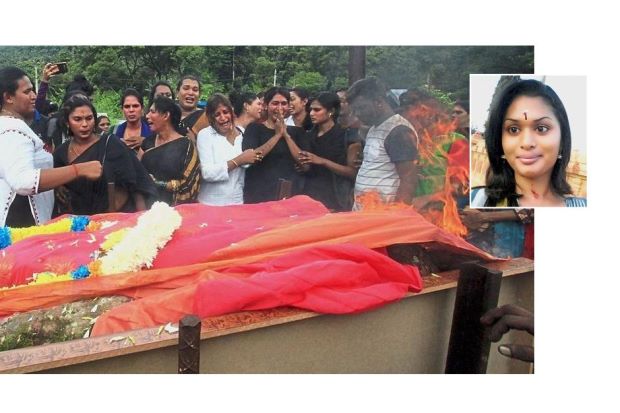Malaysian group teaches how to report on trans people
Colin Stewart is a 45-year journalism veteran. He is the…
News media need to learn how to report respectfully and accurately about trans people, so the Malaysian trans advocacy group Justice for Sisters analyzed media coverage of the February 2017 murder of the Malaysian trans woman Sameera.
This is the group’s report:
 Justice for Sisters conducted a brief media analysis on 15 articles published between 22 and 24 February 2017 in relation to Sameera’s murder. The analysis is limited to articles in English and [the Malaysian language known as Bahasa Malaysia]. However, many Chinese language and Tamil language media reported the news as well.
Justice for Sisters conducted a brief media analysis on 15 articles published between 22 and 24 February 2017 in relation to Sameera’s murder. The analysis is limited to articles in English and [the Malaysian language known as Bahasa Malaysia]. However, many Chinese language and Tamil language media reported the news as well.

It is extremely important to understand that our gender identity and sex are two different things, and our gender identity is not determined by our genitals. All persons, including cisgender, transgender, gender non-binary, and others are able to express and articulate their gender identity at a young age; some even as young as 4 or 5 years old. It is important to note that gender identity is not a binary, and all forms of gender identities are natural.
Despite the fact that headlines and articles explicitly mentioned that the news involves a transgender person, there were overemphasis and focus on her gender identity, sex assigned at birth and transition.
At least six (6) articles included Sameera’s sex assigned at birth and lived as a woman for the past eight years. An article in Harian Metro includes the fact that she had undergone gender affirmation surgeries at the age of 19. All of these facts are irrelevant to the matter at hand.
Only 4 out of 15 articles used the right term (transgender woman, transgender, and mak nyah) and her name.
[CHART: Three of those articles were in English — “Transgender woman found dead with gunshot wound” in The Star Online, which referred to Sameera as a “transgender woman”; and “Transgender found dead, mutilated” in The Star and “Netizens fume over Shameera’s murder as she’s laid to rest on birthday” in the Malaysian Times, both of which referred to her as “transgender.’ The article in Bahasa Malaysia “Mak nyah mati ditetak, dikebumi di hari jadi” in Malaysiakini referred to her as “mak nyah.”]Terms
The reports in Malay language were simply appalling and lacked basic respect for Sameera and transgender persons in general. Articles by and sourced from Bernama [the Malaysian National News Agency] addressed Sameera as ‘lelaki berperwatakan perempuan’ and ‘transgender in woman’s attire’.
The report by News Straits Times used “transvestite” and male pronouns in the report to refer only to Sameera. The report did not include her name or name as per legal document. The report however, refers to other transgender women as “transwomen” – “… the police are expected to question several transwomen here to shed further light on the matter.” …
[This is the transcribed content of a Justice for Sisters chart listings the frequency of terms used: ]
[Inappropriate terms]
“A transgender in woman’s attire” — 1
“Transsexual man” — 1
“Pondan” and “trans woman that has undergone sex change surgery” (Pondan is a pejorative term used for gay men, especially effeminate men and trans women)” — 1
“Man behaving as a woman” — 4
“Transvestite” — 1
[Appropriate terms]
“Mak nyah” (term used by the Malay trans women community) — 4
“Transgender” — 2
“Transgender woman” — 1

Name
Only 4 out of the 14 articles used Sameera’s name.
7 out 14 articles referred to Sameera by her legal name [rather than the name she herself used]. Some of these articles mention that she goes by Sameera. However, those articles still use her legal name throughout the article.
Another 4 articles did not refer to her by name. 3 out of the 4 articles referred to her as ‘lelaki berperwatakan perempuan’ and transvestite.
Good practices and examples
A few media showed good examples that can be followed by other media, editors and journalists.
- Transgender woman found dead with gunshot wound, The Star Online, 23 February 2017
This article is a good example. However, it is unnecessary to include the following point – “She added that Sameera was born male but had lived as a woman for the past seven to eight years.”
- Why transgenders move in groups, Free Malaysia Today, 26 February 2017
In this article transgender activists are interviewed to further understand the issues around safety and security of transgender persons, and impact of the murder of the transgender community as a whole. Brutal and violent incidents like this create adverse impact on the safety, security and freedom of movement of trans people. It is also important for us to understand that these cases are not isolated incidents, and examine the underlying factors and systemic issues that lead to such violence, and place trans people in vulnerable situations.
- Transgender’s mum: Why would anyone do this?, The Malay Mail and Malay Mail Online, 27 February 2017
This follow up piece includes interviews with Sameera’s family members, who shared their trauma, grief and loss following her tragic death. Articles like this are important as they humanize trans people and give space for marginalized communities to share their pain.
Related articles about terminology:
- Terminology traps: LGBTI, LGBT, or perhaps just LGB? (October 2015, 76crimes.com)
- UPDATE: gender bear now in BM, Chinese language & English (July 2016, Justice for Sisters)
- LGBTQI Terminology (Updated version of a terminology sheet created in 2003-2004 at the LGBT Resource Center of the University of California, Riverside)
- Comprehensive List of LGBTQ+ Term Definitions (Sam Killermann, Social Justice Comedian)
- LGBT (Wikipedia — from LGBT to LGBTTQQFAGPBDSM plus SGL, MSM, MOGII, GSM, LGBTTQQIAAP and many more)
- GLAAD Media Reference Guide – Lesbian / Gay / Bisexual Glossary Of Terms (GLAAD)
Related articles about Malaysia:
- Malaysian probe of trans murder could help rebuild trust (February 2017, 76crimes.com)
- ‘Ignorant’ Malaysian court rebuffs trans man’s plea (January 2017, 76crimes.com)
- Malaysia keeps violating trans women’s rights (July 2016, 76crimes.com)
- Malaysia: Stop trans arrests, repeal anti-trans law (March 2016, 76crimes.com)
- Raids, arrests of 21 trans women after Malaysian ruling (October 2015, 76crimes.com)
- Video: Malaysian prison turned [Nisha Ayub] into a trans activist (January 2015, 76crimes.com)



